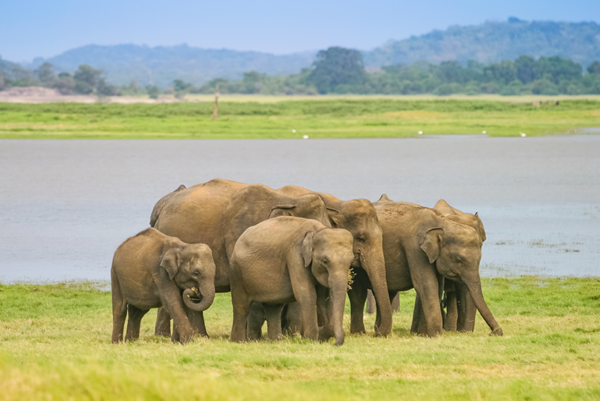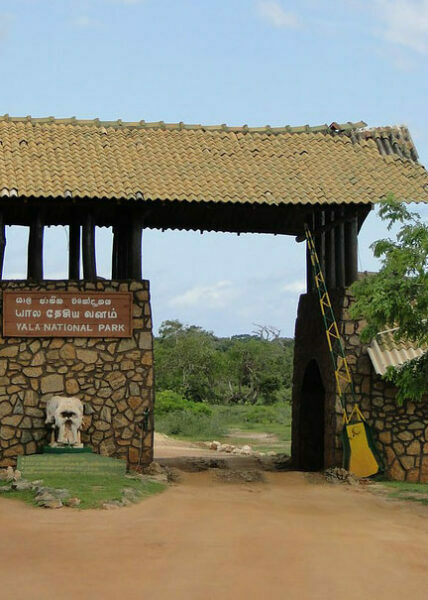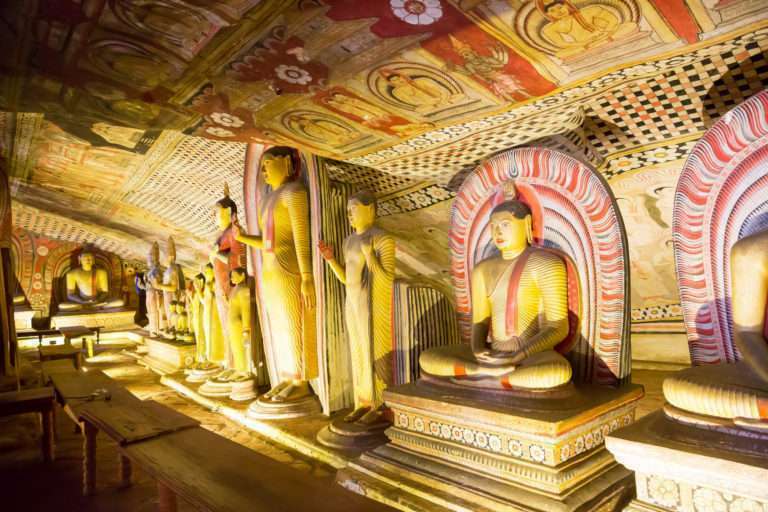Sigiriya Lions Rock Fortress Sri Lanka
Sigiriya Rock Fortress, one of the most frequented historical structures in Sri Lanka, is regarded by Sri Lankans as the 8th wonder of the world due to its uniqueness and significance. It is situated in Sri Lanka’s Central Province, in the Matale district, on the outskirts of Dambulla.
King Kashyapa built Sigiriya Rock Fortress in the fifth century AD. The Sigiriya Rock Fortress is a palace built on top of a bible-shaped rock that is still regarded as a marvelous feat of ancient Sri Lankans. From the surrounding jungles, the rock climbs 600 feet straight up into the sky.
Sigiriya Rock in Sri Lanka is one of the Asia’s oldest remaining from an ancient urban structure. It is considered to be one of the world’s most outstanding archaeological treasures. To Prove it, In 1982 Sigiriya lions rock fortress designated as a UNESCO World Heritage site as the “Ancient City of Sigiriya Sri Lanka.”

History Of the Sigiriya Rock
The Sigiriya Rock Sri Lanka rose to power and supremacy in the kingdom only in the 5th century AD, following the power struggle of King Dhatusena of Anuradhapura’s two sons. The two boys were born from two separate wives of the king. when Kashyapa from a simple consort Mogallana was born to the principal queen.
Kashyapa had rebelled after learning that the throne had been declared to Mogallana upon the king’s death, driving Mogallana out of the land to seek safety in India and imprisoning King Dhatusena, his father in order to find out the location of his treasure.
It says when Kashyapa threatened his father with death if he did not reveal the whereabouts of his possession, Dhatusena escorted him to the famous Kalawewa tank, which he had built, and indicated to its waters as his greatest treasure. According to legend, an enraged Kashyapa murdered his father by walling him up against his own tank.
According to legend, the complete stronghold, with its unbreakable buildings, astonishing engineering and architectural accomplishments, as well as the murals and inscriptions, was built in only 7 years. Regardless of how impenetrable Sigiriya Rock Fortress was, it is supposed to have collapsed during Mogallana’s invasion, culminating in King Kashyapa’s suicide.
Mogallana had promised to exact revenge on his brother after hearing of his father’s death, and Kashyapa fled the capital, making the enormous Sigiriya Rock Sri Lanka his sanctuary and pleasure palace, expecting Mogallana’s coming attack with his army of Indian mercenaries.
How does the Sigiriya rock related to Ramayana Yatra?
According to Mr. Lal Srinivas and Dr. Mirando Obesekara’s latest Ramayana explorations, Sigiriya can be considered as a posthistoric archaeology turning point for King Ravana. According to them, Sigiriya may be the Alakamandava or City of the Gods, which was created before 50 centuries ago by King Kuvera, who was King Ravana’s half brother, as specified in the Ramayanaya yatra Sri Lanka.
According to the Ravana Watha (Ravana Story) Palm Leaf Book (Puskola Potha), the architect of Sigiriya was Maya Danava. He built Sigiriya following the directions of Ravana’s father, King Visthavasa (Vishravasamuni). During that time, Sigiriya was known as Alakamandava, and during King Kuwera’s reign, it was known as Cithranakuta. Following Ravana’s death, Vibeeshana ascended to the throne and relocated the kingdom to Kelaniya.
The plateau top is believed to have been the location of Ravana’s spectacular palace, built of solid gold by Kubera, the God of Wealth, some 50 millennia ago. One look at the location reveals what an architectural accomplishment this place must have been. According to popular belief, one of these caverns is where King Ravana imprisoned Princess Sita after abducting her.

Excavation of the remaining of Sigiriya rock fortress
Major Jonathan Forbes of the British Army discovered the summit of Sigiriya, which was covered in bush, in 1831, as he was on his way back from Pollonnuruwa on horseback. Then Sigiriya drew the interest of antiquarians, and archaeologists learned about it.
Despite the fact that the British found Sigiriya Rock Sri Lanka, the surveying and excavations were overseen by the Archaeological Commissioner of Ceylon at the time, Harry C. P. Bell. His discoveries at the end of the nineteenth century have served as the foundation for all subsequent research at the Sigiriya Rock Fortress.
Further investigation and findings revealed a sculpted lion’s head over the legs and paws guarding the entryway. However, the lion fortress’s head collapsed a few years ago. Apart from it, the finds at Sigiriya included an old fortress built during the 5th century by King Kashyapa. The site also has upper palace ruins that have built on the flat rock summit. The archaeologists also discovered a Lion Gate and a mirror wall with frescoes on a mid-level terrace.
Sigiriya Frescoes Paintings
The greatest attractions in Sigiriya Rock Fortress are the paintings that date back to the 5th century and are drawn on the rock. The paintings of semi-naked females dressed in colorful decorations and carrying flowers. The figurines are thought to represent ‘Apsaras,’ or celestial nymphs, which are prominent in Asian art.
Some historians believe the paintings feature the ladies of the king’s royal court. During ancient times, these murals were famous and were reported to attract travelers from all over the world, and individuals who came to view them had written poems and prose on their beauty on a polished rock wall known as the Mirror Wall of Sigiriya Rock Sri Lanka.

Mirror Wall Sigiriya
You will find a gradual incline after climbing the Sigiriya rock past the steps of the rock garden. To get to the Lion Rock. To safely cross the incline, 5th century architects created a spectacular wall. It’s built with bricks and plastered with lime mortar.
It served as a silent reminder of the glory days of plastering technology. Furthermore, the wall of mirrors became an iconic symbol as a result of the obscene songs scrawled on it by tourists. The courtyard behind the mirror wall is approximately 7 feet wide. It is intended to be a staircase.
People came from all over the country to see it after the Sigiriya Kingdom fell. The hundreds of songs engraved on the mirror wall are proof of this. The feminine characters in the Sigiriya murals have been praised by the majority of these tourists. Sigiriya songs date from the eighth, ninth, tenth, and thirteenth centuries.
Royal Garden Of Sigiriya
The gardens of Sigiriya Rock Fortress are world-renowned and are among the oldest designed gardens in the world. The water gardens occupy the entire center part of the western side of the garden, and three water gardens’ ruins may be located here.
The first water garden is designed to form an island in the center. This is a unique feature of ancient gardens, and this one is said to be the oldest seen in the world today. The second garden is known as the fountain garden because it contains some of the oldest water fountains in the world. When compared to the other two, the third water garden is higher in height.
The Boulder Garden at Sigiriya Rock Sri Lanka is another amazing achievement that may be seen in Sigiriya. It is made up of several huge boulders connected by stone walkways and runs from the northern to the southern slopes of the rock at its base. Most of these rocks are supposed to have formerly housed a building or a pavilion, and the ruins of the king’s audience hall may still be seen on the flattened surface of a massive boulder.
Lion Staircase
The Lion Staircase is one of Sigiriya Rock Fortress’s most beautiful features. The two massive paws and bricks that form an arch to the limestone staircase have been kept and are still gorgeous today. This is the entryway to the palace on top of the rock, and it is reported that in ancient times, the lion building here was full and majestic, with visitors having to walk through the gaping mouth of the giant stone lion.


Interesting Facts about the Sigiriya Lions Rock
How did they distribute the water to the top of the rock?
To generate the water pressure for the water fountains, Sigiriya Water Technology used an underline pipe system and as many water retention ponds as possible were built in the city complex beginning at the Rock Summit. Built this system from Highland to Lowland to achieve high water flow rates by utilizing Kinetic Energy. Even now, more water management technologies can be found there.
how many steps does it have to the top?
There are 1270 steps to climb. It is a rather difficult climb. With the heat and humidity, the best times to climb are during the morning or evening. Ages under 70 can be recommended.
Sigiriya Rock Height?
Sigiriya Rock is rises to an elevation of 349 meters (1,144 feet) above sea level while the surrounding plain is 180 meters (600 feet) above sea level.
How Long Does It Take To Climb Sigiriya Rock?
Approximately an hour and half. However, if you go during busy hours, it may take a little longer.
How Much Does It Cost To Climb Sigiriya Rock?
It costs 50 rupees for locals and 30 USD for all foreigners (5000 Rupees).
What Should You Wear When Climbing Sigiriya Rock?
As Sigiriya is neither a religious site or temple, there is no requirement to dress in white or modest attire. Because the environment around the rock is very hot, with temperatures reaching 30 degrees during times of the year, light-weight garments that are simple to move in are your best option.Comfortable shoes are required. Flip flops aren’t a good idea because you risk slipping.
What Is The best Time To visit Sigiriya Rock?
You can visit Sigiriya Rock Sri Lanka at any time of year, and the hours of operation are 7.00 AM to 5.00 PM. It is best to Sigiriya (Sigiriya) Mountain Climb early in the morning or late in the evening to escape the hot sun, and in the evenings, you will be able to see one of the most beautiful sunsets on the island from the top of the rock.
How busy is Sigiriya?
On a local holiday, Sigiriya may be visited by more than 10,000 people. There will be around 1500 people on the Sigiriya cliff on average.
Top thinngs to do in Sigiriya
1. Visit Sigiriya Museum.
because it contains more information about the Sigiriya Citadel, as well as the Lion Rock Fortress and ruins discovered nearby. Many people recommend going to the museum before starting your trek. That way, you’ll be able to enjoy everything you see on the climb up and understand the rock’s historical importance.
2. Climb Pidurangala Rock.
Many visitors prefer to climb Sigiriya Rock first thing in the morning and then trek up Pidurangala Rock to witness the sunset. You are welcome to complete them in that order, but it will be exhausting and you will be walking in the midday sun. Climbing Pidurangala is less pricey than Lion Rock.
3. Jeep Safari in Minneriya national park.
If watching elephants is high on your list of things to do in Sigiriya, you must take a day trip to Minneriya National Park. It is well-known for attracting large herds of elephants throughout the dry season the fee of entering the park is around $15 per person, plus the cost of renting a jeep safari for the day.
4. Bird watching in Kaudulla national park.
Kaudulla national park is one of the most important birding locations in the country and is growing increasingly popular with tourists that choose to visit Sigiriya.


A massive column of rock rises from the lush jungle in the middle of Sri Lanka, filled with frescoes, graffiti, and planted gardens. The rock is known as Sigiriya (see-gee-REE-yah) and. If you visit Sri Lanka, don’t forget to see this historical site.
Ceylon Hunt has tour packages which facilitate your tour to Sigiriya and you can check them going through our tour packages or make the resevations through our website.







